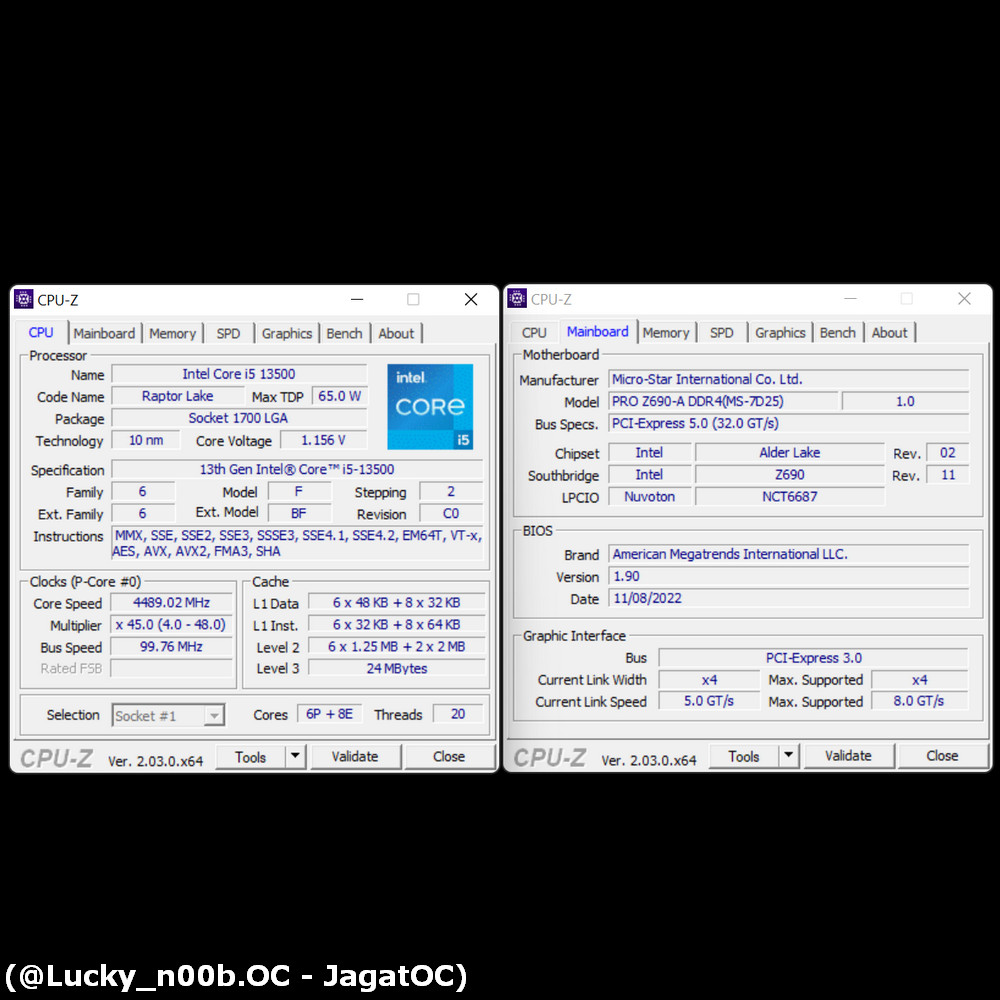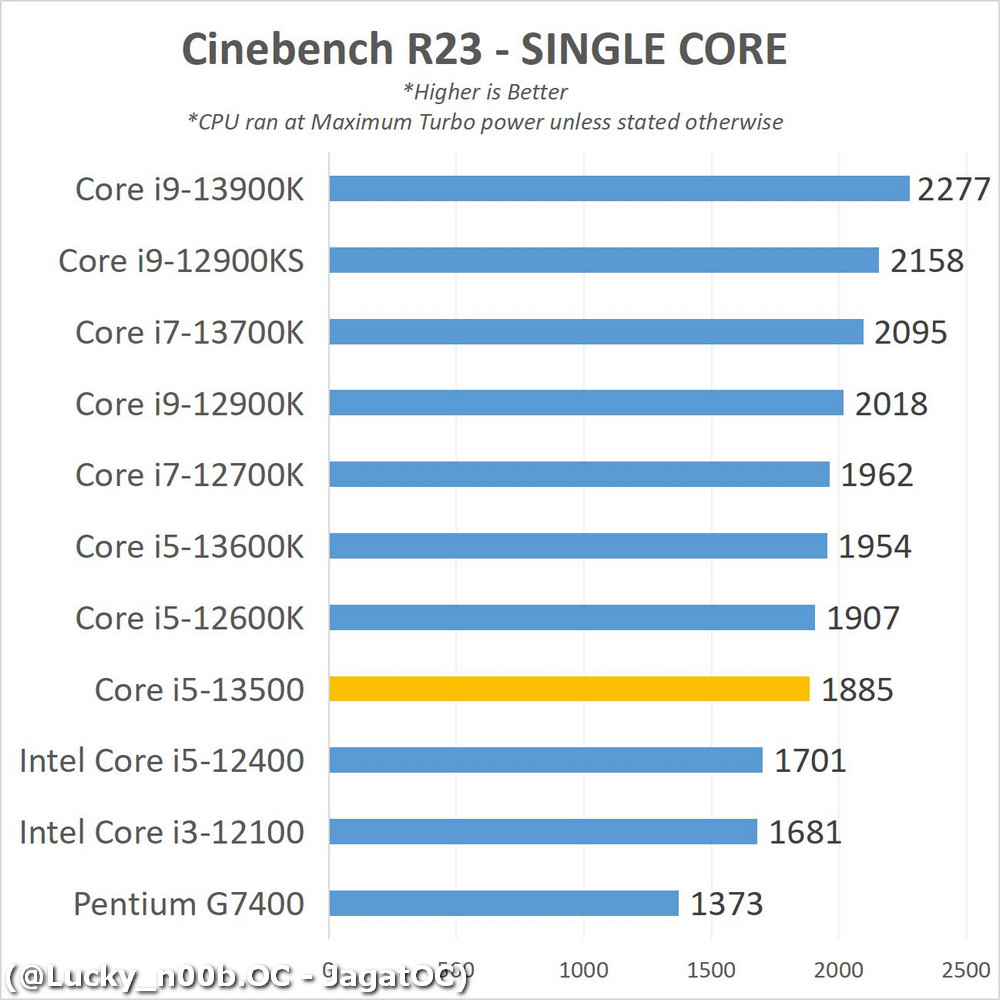The i5-13500
Let’s go over the specifications of this CPU first. The i5-13500 features 14 (6P + 8E) cores / 20 threads and 24MB of L3 cache. The base frequency stands at 2.5GHz which can go as high as 4.8GHz. Today’s test features the MSI PRO Z690-A DDR4 board. This CPU has a TDP (PL1) of 65W, which can be increased to 154W (PL2). The tester confirms that the i5-13500 uses the C0 Alder Lake die.
Performance
Across a single core, the i5-13500 can manage a frequency of 4.8GHz. Of course, this metric is for a Performance core, not an Efficiency core. The interesting part about this CPU is that at 65W, the CPU can hit 2.9GHz across both the P and E cores. However, in the max power mode, the frequencies go as high as 4.5GHz and 3.5GHz for the P and E cores respectively. That’s a massive 1.5GHz difference which can make a huge performance impact. In CinebenchR23 single-core, the i5-13500 scores 1885 points which puts it just behind the i5-12600K. This is quite the leap from the last generation, especially in terms of single-core performance. The largest jump in performance comes in multi-core performance where the i5-13500 is almost 2x faster than the i5-12400. A score of 21103 puts the i5-13500 right next to the i7-12700K. The i5-12600K in this case is out of the question as it falls short by a huge amount.
Conclusion
The i5-13500 is a huge upgrade from Alder Lake’s budget offerings. This CPU has put up some serious competition for AMD’s Non-X offerings which are set to be announced at CES 2023. Can AMD compete? Of course but the overall platform cost will always tip the balance in favor of Intel. Until AMD fixes its AM5 board prices, Intel will outsell them, especially in the lower-end segment.
Run on MSI PRO Z690-A DDR4 (1.90 BIOS), and GSkill TridentZ RGB DDR4-3600 2x16GBJudging from the L2 Cache, seems like an Alder Lake C0 die with 2 less P-Core?Default detected power config is 65W PL1/154W PL2Increasing PL1 from default 65W to Max/Unlimited mode will give massive clock boostMax Clock 1-Core 4.8Ghz (P-Core)Sustained All-core Clock on default 65W Mode 2.9-3Ghz P-Core, 2.9Ghz E-CoreSustained All-core Clock on Max/unlimited PL1 4.5Ghz P-Core, 3.5Ghz E-CoreDefault 65W Mode might be feasible for Stock Heatsink (Temp might be higher just for the initial Burst to 130W ish)Unlimited/Max PL1 Power IS NOT RECOMMENDED for Stock Heatsink (will easily hit TjMax)65W Multi-Core Performance almost match an i5-12600K on Cinebench R23Max/Unlimited Power Multi-Core Performance slightly below i7-12700K!Single-Core close to i5-12600K.
Quick Summary:
Pretty Decent overall performanceMight be run on cheap/value H610 board, but PLEASE make sure power is 65W, not maxxed outRecommended to pair with midrange B660 and Decent 120mm Tower HSF (like Thermalright TA120 EX or ID-Cooling SE-224XT), max out all power limit on the board to get optimal multi-core performance. Now I’m not sure if i5-13600K is my best CPU of the year, this i5-13500 CPU might have better multi-core performance-per-dollar
— Alva “Lucky_n00b” Jonathan





